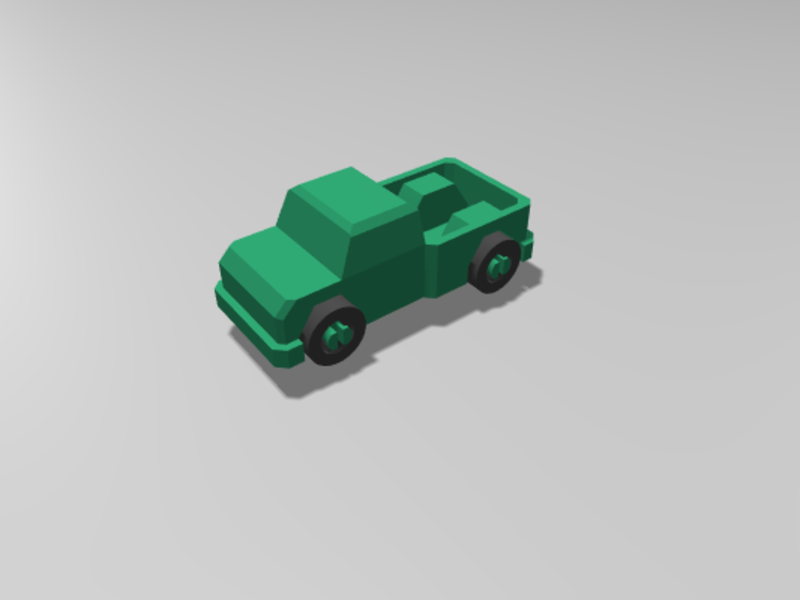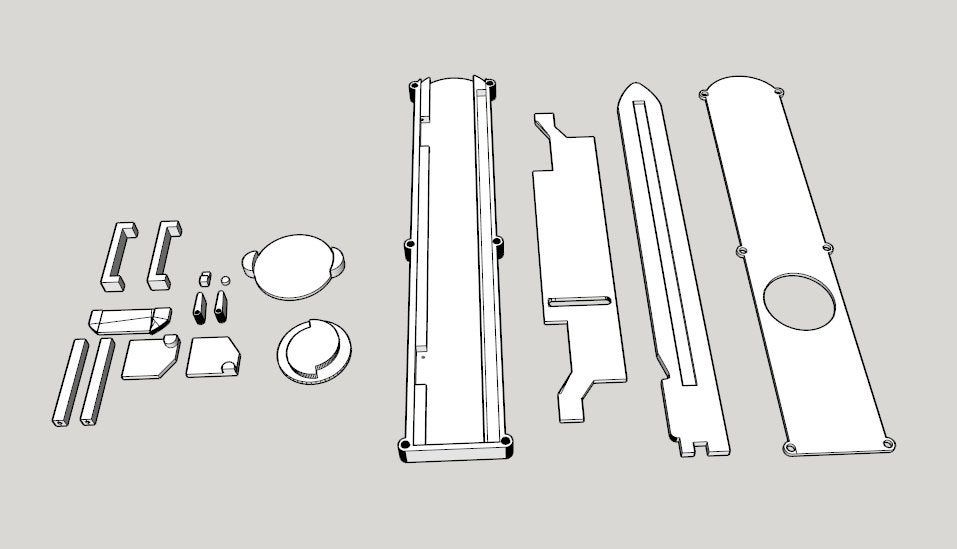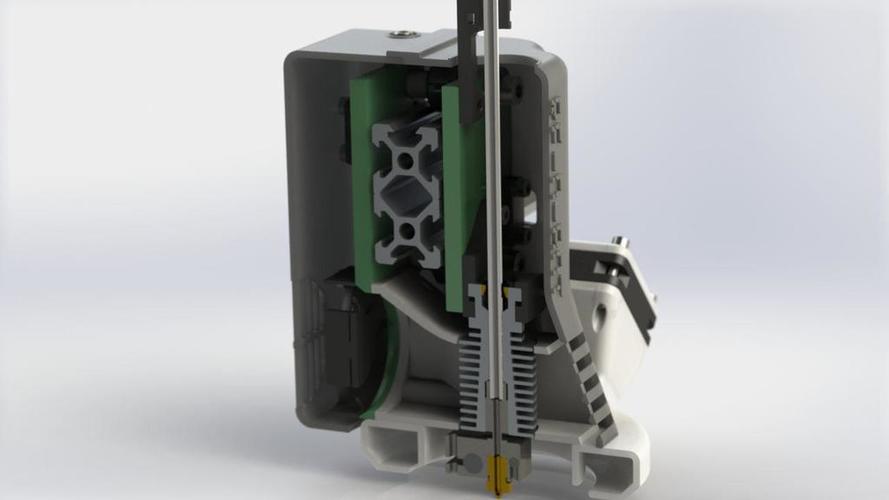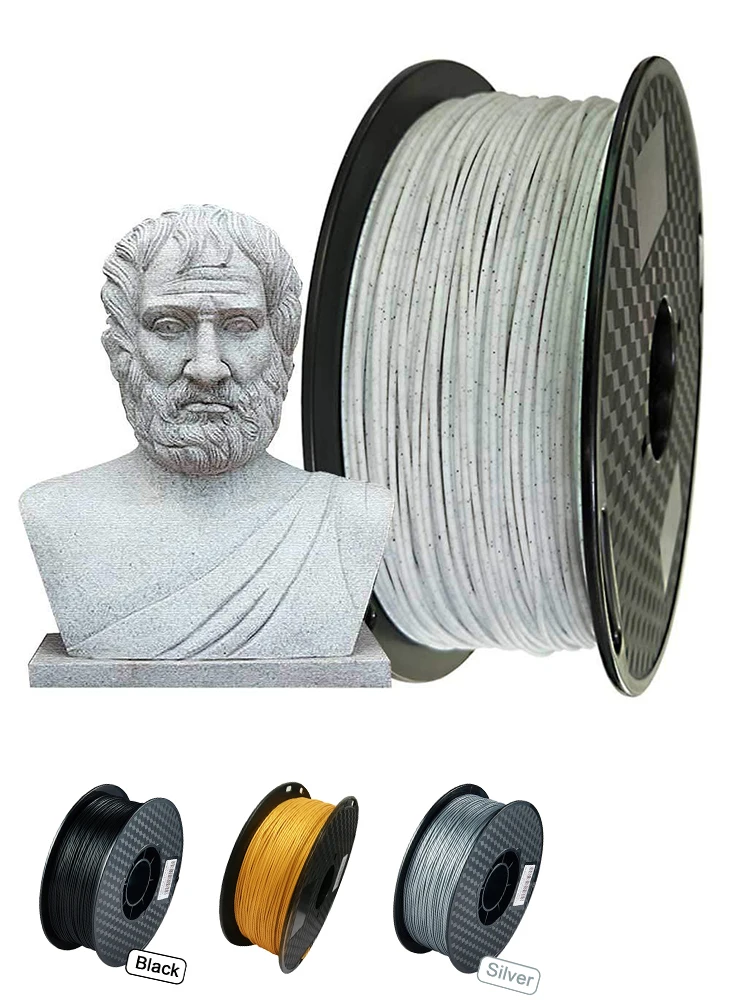Can a 3d printer catch on fire
3D Printer Fire Risks with Overnight Printing
Many 3D printing projects can take a long while to finish. Depending on the object’s complexity, it can take days or weeks and months to print. Because of this, you could wonder, “Is it safe to leave a 3D printer on overnight?” Suppose you have Ender 3, Original Prusa i3 MK3S, Anycubic Vyper, Voxelab Aquila S2, or any other machine. In that case, you should be aware of 3D printer fire risks.
A 3D printer can be a helpful tool. You’ll be able to use it to create a wide range of items, including elaborate 3D printed cosplay costumes, unique jewelry, replacement parts, models of your favorite pop culture characters, etc. But is overnight printing a good idea?
Overnight Printing
Advanced hobbyists and newbies who are just starting their first 3D print and see that their 3D printer requires more than 12 hours of work often worry about safety. Is it safe to leave Ender 3 running overnight? Can an overnight print cause such issues as a printer on fire? Are there any other problems you can come across if you pause 3D print overnight or leave a 3D printer on overnight? Do 3D printers use a lot of electricity?
It’s generally recommended that you avoid leaving a 3D printer on overnight. Some things can go wrong if you leave your 3D printer unattended.
One of the biggest potential problems is seeing a printer on fire. Here are the top reasons why this can happen:
- The heat might build up in the wiring. If there is too much heat, it could combust. The extruder will get hot. So, if something explosive, like a curtain, comes into contact with it, a 3D printer fire hazard could be possible.
- Another potential issue is that the fumes from the 3D printer can build up. It can lead to health issues if you breathe them in. To ensure that this doesn’t happen, you should ensure that you are using the 3D printer in a well-ventilated room. Sometimes, you can put a fireproof 3D printer enclosure for added security. You can even build an enclosure yourself.
- The 3D model might come loose, slipping off the build plate. But the extruder arm will continue to print. Within a few minutes, you’ll be left with a mess.
Read also: The Best 3D Printer for Beginners (15 Entry-Level Machines)
Image credit: Hackaday3D Printer Fire
Thankfully, you can take some steps to ensure that you don’t need to worry about a 3D printer fire hazard.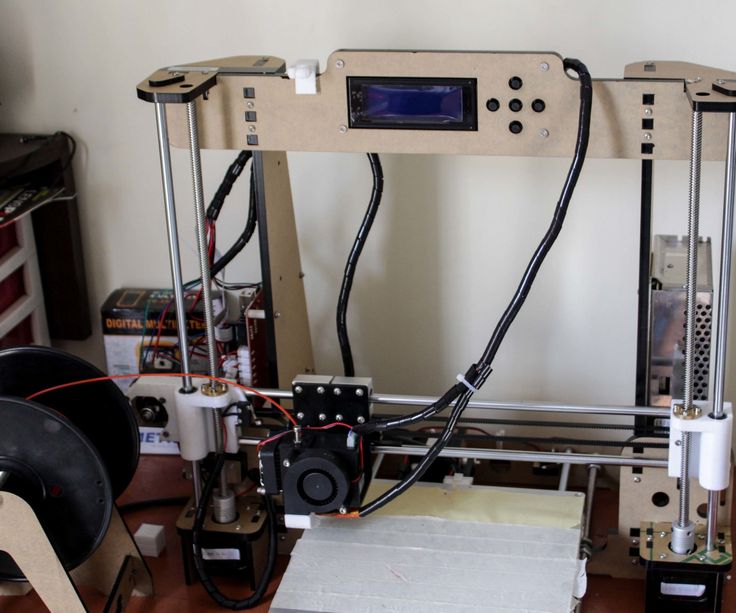 Usually, the dangers of a 3D printer catching fire are attributed to insufficient electrical contacts and suspicious fire resistance of the plastic connector housing.
Usually, the dangers of a 3D printer catching fire are attributed to insufficient electrical contacts and suspicious fire resistance of the plastic connector housing.
It is always essential to keep an eye on the 3D printer. If something is going wrong, you’ll be able to step in and take control. It is necessary to inspect your 3D printer before you start printing. Search for loose wiring, which can happen when a screw comes loose. This inspection requires just a few moments, but it can significantly reduce the chances of a 3D printer fire.
Follow other 3D printer fire safety advice to avoid any dangers of 3D printing overnight.
Balrog 3D printed by Diego Molina3D Printer Fire Safety
If you an overnight printing fan, you might want to set up a camera to live stream the print to your phone and check it periodically during the night.
It’s good to install a smoke detector with your Ender 3 or a different machine in the room. It’s great to keep a fire extinguisher in the room.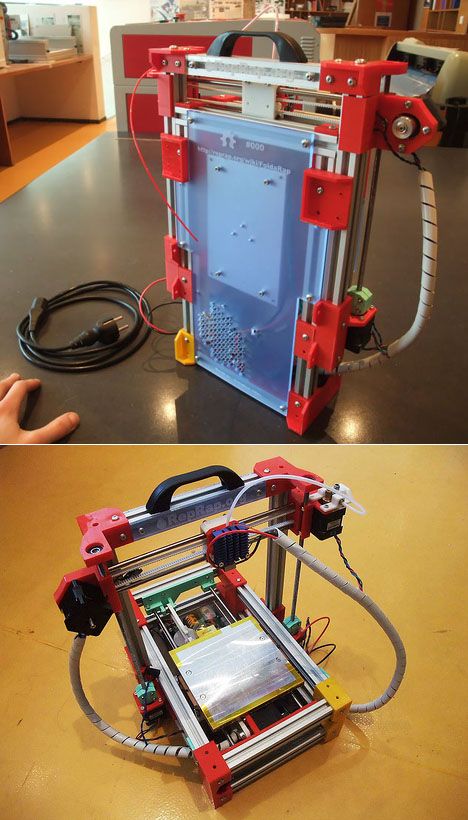
While it’s rare for a 3D printer to start a fire, it can happen. If this does happen, it’s essential to act quickly to control the situation.
3D Printer Fire Suppression
Ensure that you purchase the most affordable yet high-quality 3D printer, the best 3d printer for cosplay, or get a fireproof 3D printer enclosure to protect your device.
3D printer fire suppression system by BlazeCutA suitable enclosure can become your best 3D printer fire suppression accessory. Fireproof and flameproof boxes can protect most brands of 3D printing machines.
Still, you must add ventilation and ensure your device does not overheat inside a fireproof 3D printer enclosure. If there is too much heat inside a box, the electronics and your printer motors will have a shorter life. The cold end could also become too warm and cause problems.
If you use hot ends, ensure the internal temperatures inside the enclosure are between 38C (100F) and 42C (107F).
Follow the manufacturer guidelines when you think of creating 3D printer fire suppression using a special fireproof enclosure, and you’ll be all right.
Pausing a 3D Print Overnight
Many printers are capable of pausing a 3D print overnight. If you need to leave home or don’t want to have your machine working while you are asleep, pause 3D print overnight. As long as you don’t move the bed, it should resume printing as usual when you return (of course, your machine should have the resume printing feature).
However, this won’t be suitable if you plan to leave the print for an extended period. The model will often shrink a little as it cools, leading to lop-sided prints.
Also, every manufacturer will add an abstract to their instructions to never leave a 3D printer working unattended.
How Long Can a 3D Printer Run
Is it safe to leave Ender 3 running overnight or not? As long as you get a high-quality 3D printer, you shouldn’t have any problems running it 24 hours a day.
According to some Ender 3 users, their printers work fine when left running overnight.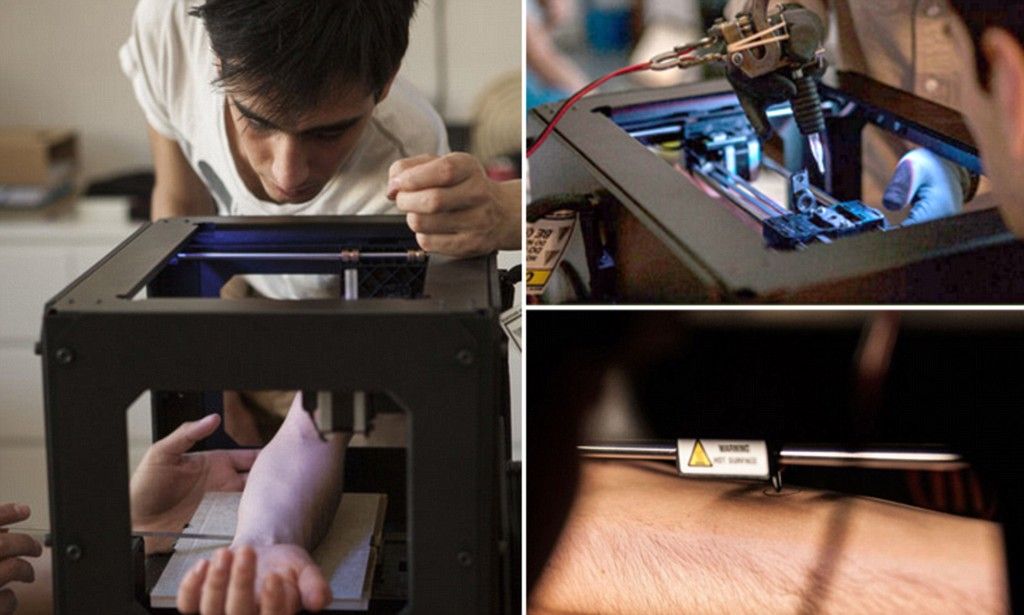 According to Ender 3 manufacturer, proper use and maintenance of this popular and affordable machine can serve users for at least five years and for up to 10 years. But keep in mind that the Ender 3 lifespan and the lifespan of many other devices depend on how well hobbyists maintain their 3D printers and how often they use them.
According to Ender 3 manufacturer, proper use and maintenance of this popular and affordable machine can serve users for at least five years and for up to 10 years. But keep in mind that the Ender 3 lifespan and the lifespan of many other devices depend on how well hobbyists maintain their 3D printers and how often they use them.
But anyone afraid of a 3D printer fire hazard should better pause their machine right from its control box. If you own Ender 3 and don’t want to leave it for overnight printing, you can press the 3D printer to see standard options and click “Pause Print.” You will pause your device and bring its head and bed to a home position. Once you are ready to resume your print, click the “Resume Print” option.
By the way, many print shops that offer reliable 3D printing services worldwide often take overnight print orders. Thus, anyone with the proper safety procedures shouldn’t have any 3D printer fire problems. The best and more expensive printers can often run non-stop for weeks.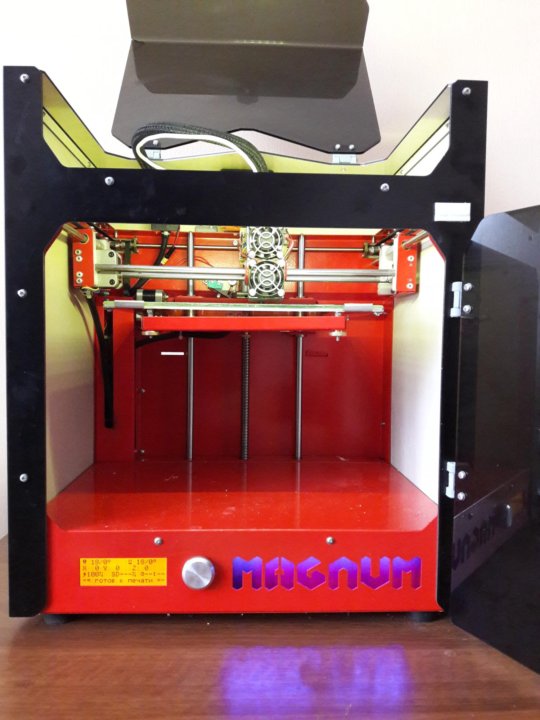
However, it is vital to stop printing once in a while to perform some maintenance. For example, you will need to clean the printer bed. It will ensure that the print will stick correctly. It’s also an excellent idea to re-level the bed and give your machine some rest.
Do 3D printers use a lot of electricity?
When you choose an overnight print option at home, you could worry not only about 3D printer fire suppression. Your other question could be, do 3D printers use a lot of electricity?
Alien 3D print by Robert SalvadorMost 3D printers are not big electricity consumers. Depending on the brand, your machine can use from 50 to 150 Watts as they 3D print. We can compare these numbers to how much 1-2 incandescent light bulbs use.
Of course, a lot depends on your particular device and the printing settings you use. So it would help if you did the calculations yourself, considering the information your manufacturer shares about your 3D printer.
Read also: Incredible Stuff You Can Make with a 3D Printer
Tips on Completing a Longer Print
There are a few strategies that you can use when taking on large 3D printing projects without overnight printing.
First, it’s essential to break your model down into multiple smaller prints using your favorite slicer. These individual prints can be assembled during the post-production process. If you do this, you will be able to create something larger than the base plate.
Stunning long print by Gordon MartinYou can join the prints together using several methods. The most common option is to use superglue. If you want to make a stronger bond, you can use screws. Gambody.com offers many detailed 3D printing models with special slots for neat assembly without glue and screws. You can see over 50 photos of finished no-glue 3D prints shared by many Gambody enthusiasts.
It’s also important to look at the settings of your printer. Double-check that everything has been appropriately calibrated. When making a larger model, any minor problems will be amplified.
Think about the type of material you are using. There are many types of filaments that you can explore. Unfortunately, not all of them are good for creating larger projects.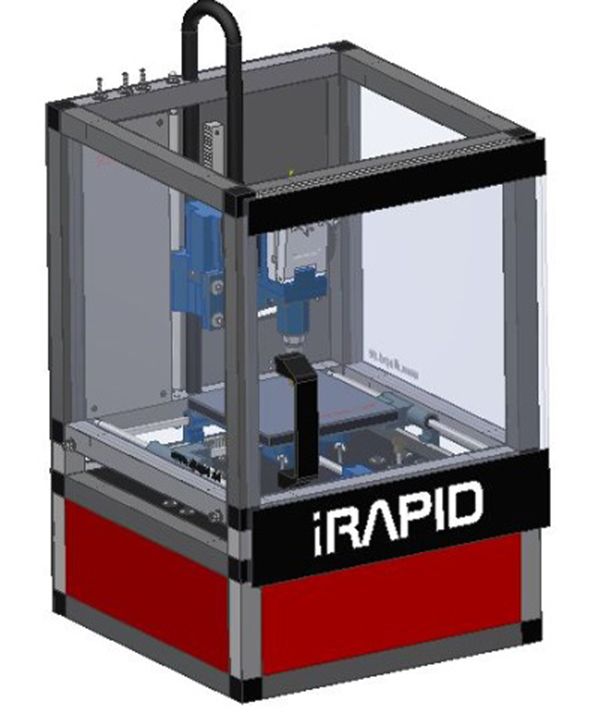 For example, ABS will shrink as it cools, which can cause some problems as the model might become cracked. Resin is too expensive to use for building giant models. But PLA could be great for making life-size 3D prints.
For example, ABS will shrink as it cools, which can cause some problems as the model might become cracked. Resin is too expensive to use for building giant models. But PLA could be great for making life-size 3D prints.
Printing larger models can be a bit of a learning curve. Don’t be upset if it doesn’t turn out exactly as you had hoped. Please keep track of any mistakes you made and work on improving them in the future. Before you know it, you’ll be printing large, complex models with ease and without 3D printer fire hazards. Remember that you don’t have to leave a 3D printer running overnight if you are afraid of catching fire. Pause your print and resume printing during the daytime when you are nearby and can control any situation.
Conclusion
3D printers are excellent devices that help bring your imagination to life. Follow a few safety precautions to evade 3D printer fire dangers. Avoid leaving the machine unattended and consider pausing your prints instead of overnight printing or build a fireproof 3D printer enclosure with all safety measures according to the manufacturer. While the odds of anything happening are low, especially if you have suitable safety precautions, it’s best to consider all possible risks and prevent dangerous situations.
While the odds of anything happening are low, especially if you have suitable safety precautions, it’s best to consider all possible risks and prevent dangerous situations.
(Visited 1,570 times, 1 visits today)
Author
3D Printers Can Burn Down Your House! Fireproofing Guide
- Author
- Recent Posts
Martin
Martin has a M.Sc. in physics and has gained many years of experience in industry as a lab manager and quality assurance manager. He has now tested dozens of 3D printers and is happy to share the collected experience with each new article.
Latest posts by Martin (see all)
- BQ-Hurakan vs. Ender-3 V2 Neo | Comparison, Pros & Cons - November 10, 2022
- Mouse Ears (Brim Ears) vs. Warping in 3D Printing – Guide - November 10, 2022
- Ender-5 S1 vs.
 Ender-5 Pro | Comparison, Specs, Pros & Cons - November 9, 2022
Ender-5 Pro | Comparison, Specs, Pros & Cons - November 9, 2022
Disclosure: Links marked with * are Affiliate Links. I earn from qualifying purchases if you decide to make a purchase through these links – at no additional cost for you!
Basically, there is a danger that your 3D printer could catch fire. This starts at the machine itself, spreads throughout the room, and eventually burns down the entire house.
It is not particularly complicated to take preventive measures and to prevent such a catastrophe. At the very least, damage can be limited in the event that the 3D printer does catch fire.
There is always some risk of fire when using a 3D printer. The question is whether this can be controlled. If you’re in the same room as the 3D printer, turning off the power is usually enough. But if you’re away from home when a fire breaks out, what can you do?
The following text not only provides an overview of the various risks of a 3D printer and its environment that can result in a fire but also provides important tips for remote monitoring and control.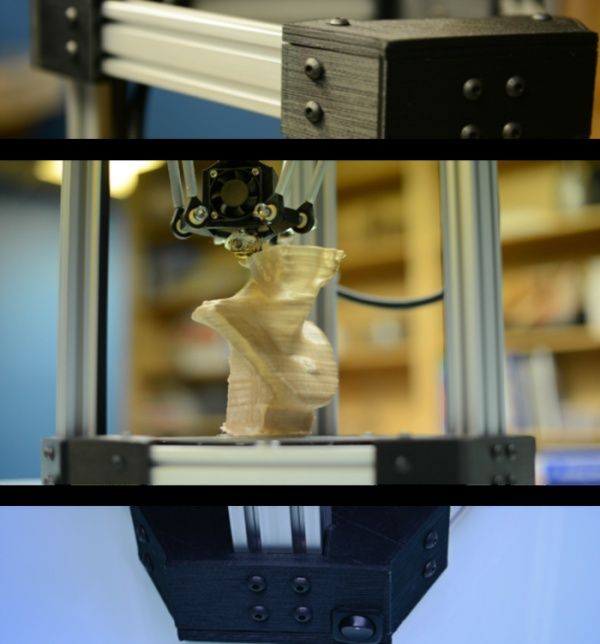 It also describes effective prevention measures to ensure that you can sleep without worry at night while your 3D printer is still working on a new 3D model.
It also describes effective prevention measures to ensure that you can sleep without worry at night while your 3D printer is still working on a new 3D model.
Although the 3D printer tends to be one of the less dangerous manufacturing equipment, it does present some risks. Users who have had experience with burning 3D printers are unanimously advised never to leave them unattended. This is especially true for models that have a heated chamber.
Table of Contents:
- 1 Negative Example: The Anet A8
- 2 Why is there an Increased Risk of Fire in 3D Printing?
- 3 How Does the 3D Printer Cause a Fire?
- 4 General Information on Fire Protection
- 5 Preventive Firefighting Begins at the 3D Printer Itself
- 5.1 The Frame
- 5.2 Filament
- 5.3 Hot End Temperature Monitoring
- 5.4 Housing
- 5.5 Power Supplies
- 5.6 Connections
- 5.7 Bolted Connections
- 5.8 Cable Connectors
- 5.9 MOSFET
- 5.10 Fuses
- 5.
 11 Excessive Cable Elongation
11 Excessive Cable Elongation - 5.12 Proper Functioning of the Firmware
- 6 Other Preventive Fire Measures
- 6.1 Keep your device clean
- 6.2 Ensure a tidy work area
- 6.3 The execution of remote printing and its monitoring
- 6.4 Cameras
- 6.5 Alarm
- 6.6 Plug
- 7 OctoPrint – The Ultimate Solution for Remote Control of your 3D Printer
- 8 Related Questions
- 8.1 Is there an alternative to the MOSFETS?
- 8.2 What components are required to install an SSR?
- 8.3 What else is needed so that an SSR already installed can contribute to fire protection?
Negative Example: The Anet A8
The Anet A8 3D printer was long considered a very popular model, as it was available for under 100 dollars. This made it a great Christmas gift for children to introduce them to 3D printing through play. It could not only be found on various Chinese shopping portals but could also be bought at Amazon*.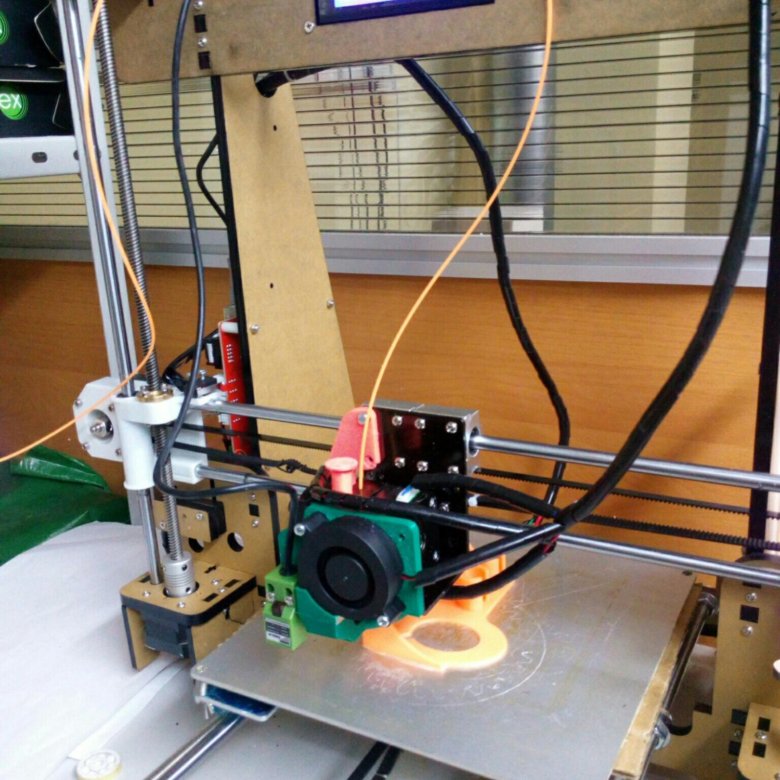
Over time, however, it became known that the Anet A8 3D printer is a time bomb, as it regularly goes up in flames. In many places on the web, you can find shocking photos of burnt Anet A8 3D printers and the devastation they caused.
Burned Down Anet A8. (source: reddit)Often the user was able to extinguish the fire in time, but all that was left of the printer, the filament and the surrounding area was a black heap of plastic. In some cases, even half the house fell victim to the flames. The most common cause of fire in the Anet A8 is the thermistor, which actually has the task of measuring the current temperature of the print head and thus provides the values for controlling the print temperature.
It turned out, however, that this temperature sensor regularly loosens and thus gives significantly lower values than those actually present in the heating element in the print head.
In addition, the Marlin firmware, which is outdated or modified by the Chinese manufacturer, attempts to readjust the temperature drop. This results in a red-hot print head, which not only melts the filament that is still being fed and heats it up to its flashpoint but also reaches the plastic parts in the surrounding area.
This results in a red-hot print head, which not only melts the filament that is still being fed and heats it up to its flashpoint but also reaches the plastic parts in the surrounding area.
Melting cables and high currents cause short circuits, among other things. Furthermore, the undersized terminals on the printer board are not designed for the prevailing operating currents. Therefore many users of the Anet A8 reported that the boards are scorched and have to be replaced afterward.
Of course, the easiest way to avoid such a risk with the Anet A8 3D printer is not to buy it in the first place, but to opt for a higher quality model.
The Anet A8 can at least not be put into operation without having made some modifications in advance. For this, you need the appropriate technical knowledge, professional tools and craftsmanship. You should also be able to update the firmware accordingly.
If you have practical experience with 3D printers and their electronics, you will be able to upgrade the Anet A8 to keep it from going up in flames.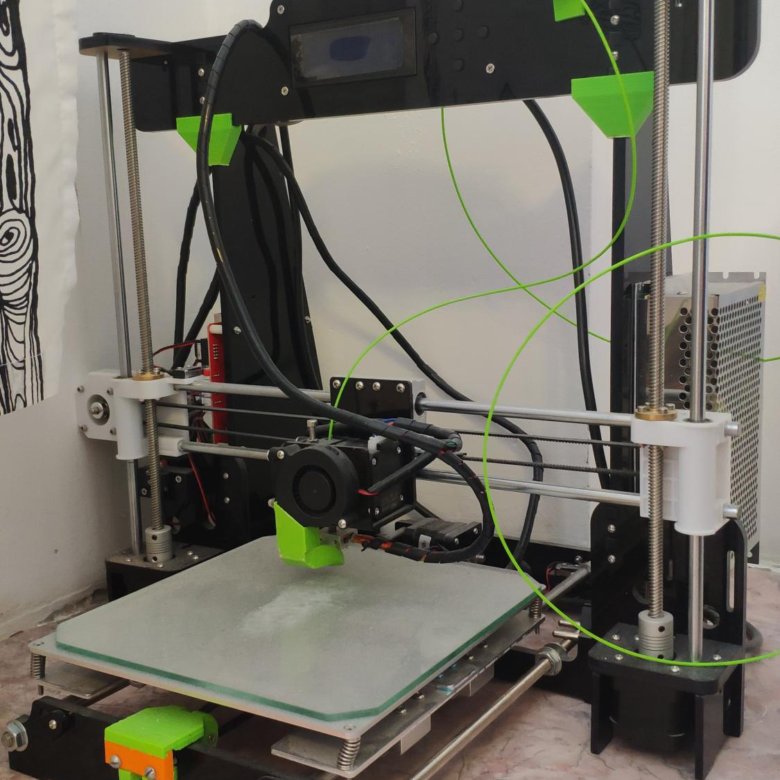 If not, you will either need a professional or, for your own safety, look for an established 3D printer in the 250-300 dollar price range.
If not, you will either need a professional or, for your own safety, look for an established 3D printer in the 250-300 dollar price range.
Why is there an Increased Risk of Fire in 3D Printing?
During the printing process, hot plastic is applied to an equally hot building plate. The average temperature is 220 degrees Celsius, which is also the temperature in an oven.
The causes of fire are usually not to be found in the actual process, but rather in the equipment used. The consequences are plate fires, flared nozzles or destroyed power supplies. But often there are also a multitude of possible fire sources at the workplace.
These include spray cans of cleaning and lubricating agents or flammable hairspray placed near the 3D printer. Exposed or poorly routed cables pose an additional hazard.
How Does the 3D Printer Cause a Fire?
The wide variety of 3D printers available on the market is compliant with government regulations and therefore considered safe.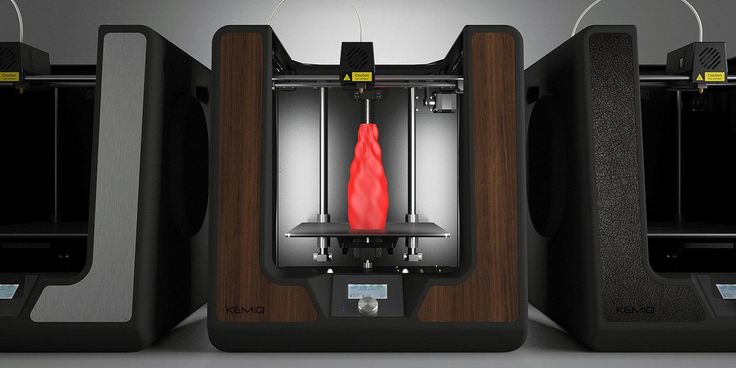 However, this is also reflected in the purchase price of such a secure printer, which can quickly exceed 1000 dollars.
However, this is also reflected in the purchase price of such a secure printer, which can quickly exceed 1000 dollars.
In particular, users who prefer 3D printing as a hobby are increasingly turning to very affordable 3D printer kits from China, which are available for hundreds of dollars. You should know, however, that such a kit is potentially very dangerous. The power supplies built into the printer are not tested, the circuit boards often have insufficient solder joints and the other processed components are often of poor quality.
In addition, such 3D printers are increasingly made of acrylic glass, which further promotes the spread of a developing fire. In addition to the high risk of fire, these kits also have an increased risk due to wiring work, which can normally only be carried out by qualified electricians. If not expertly executed, such work carries the risk of being injured or even killed by an electric shock.
General Information on Fire Protection
First and foremost, you should always ensure that your apartment or house has a sufficient number of functioning smoke detectors*.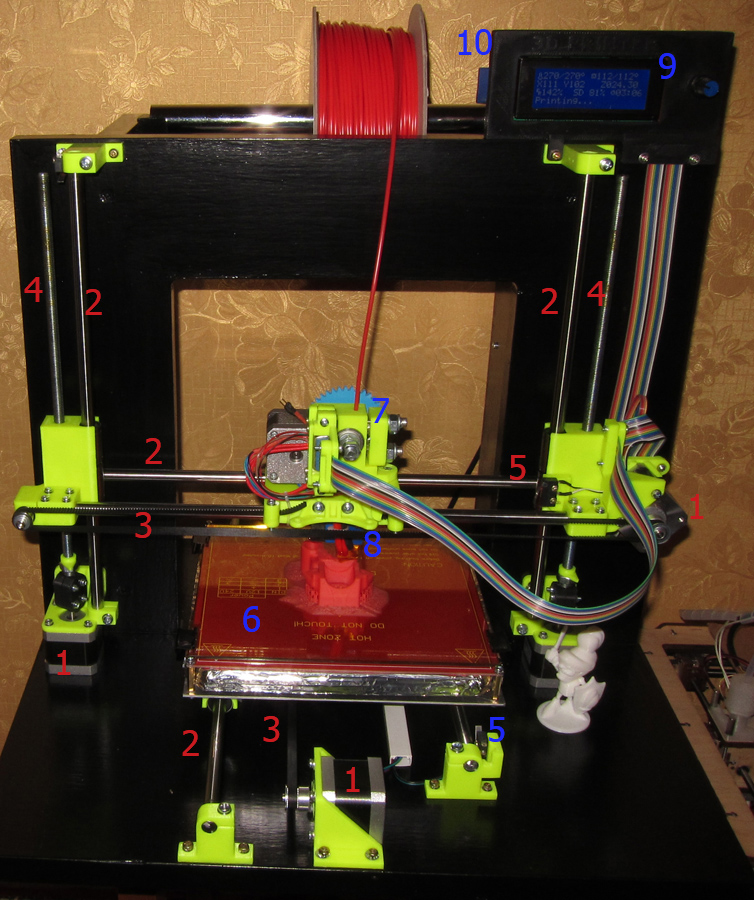 This is easy to check and is not only advisable when using a 3D printer.
This is easy to check and is not only advisable when using a 3D printer.
When the 3D printer is used to produce complex or large print jobs, they can be time-consuming. However, if you do not want to spend 20 hours or more next to your device, it is recommended that you arrange for automatic fire extinguishers to be placed near the printer.
The range of fire protection solutions available on the market, specifically designed for 3D printing technology, is also constantly expanding. For example, 3DPrintClean has developed an automatic fire extinguishing system that is especially useful when you cannot monitor your 3D printer around the clock.
Smoke Signal is another protective measure developed by a full-time aeronautical engineer and part-time tinkerer. This smoke detector is connected to the 3D printer by attaching it partially near the nozzle or to the electronics inside the 3D printer. If smoke is detected, the device immediately detects it and automatically shuts down the printer.
In order to be prepared for the worst case, you should have household insurance. This is highly recommended even if there is no 3D printer in your home.
Preventive Firefighting Begins at the 3D Printer Itself
Especially if you want to print jobs remotely in the future, the right printer functions will help to minimize risks. Most fires caused by 3D printers are electrical fires.
These are mainly caused by wires, terminals or individual components becoming so hot that either plastic insulation develops fire or other parts are ignited which are in direct contact with the wire. Many variants of wire insulation and connectors are already flame retardant.
So if overheating occurs, the plastic melts first. However, the plastic has an additional chemical that prevents it from actively catching fire, even in contact with an open flame. By contrast, most of the other plastic parts of a 3D printer are not normally flame retardant, so a single defect can set fire to the entire device.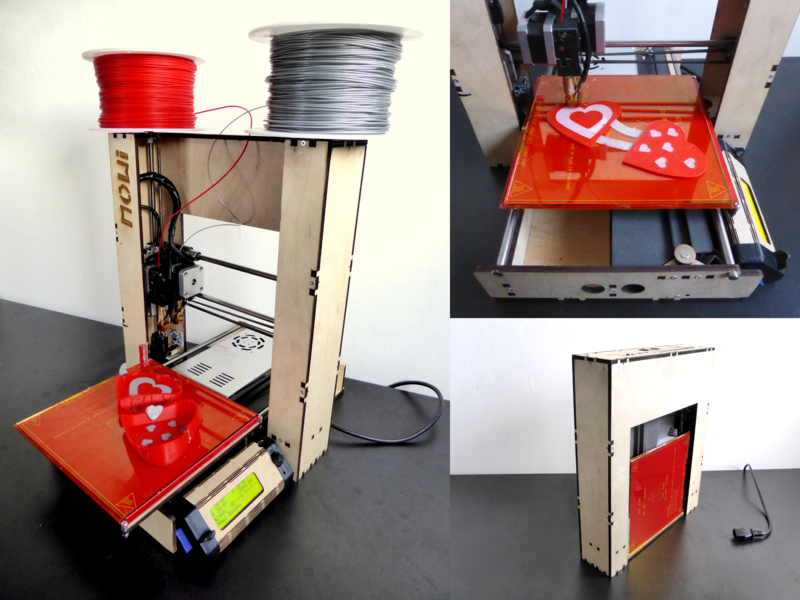
So, you should first carefully check all the components of your 3D printer.
Some points you should pay special attention to are:
The Frame
The frame of a 3D printer represents the largest combustible part when it is actually a flammable material. For example, wood is a suitable material from a mechanical point of view, but it is an extremely hazardous material from a fire safety standpoint.
While even an acrylic frame can catch fire, the best choice is an all-metal frame, which does not burn under normal conditions. But even with a metal frame, the printer has numerous other plastic parts, such as spiral wraps on the cables or various V-slot covers.
Filament
Ordinary filament is highly flammable. You should consider using one of the newer, flame-retardant filaments in 3D printing in the future. This is especially true if you store the filament in locations close to cables, electronics or heaters.
Many 3D printers with filament sensors will suspend or stop the print job if a material shortage is detected.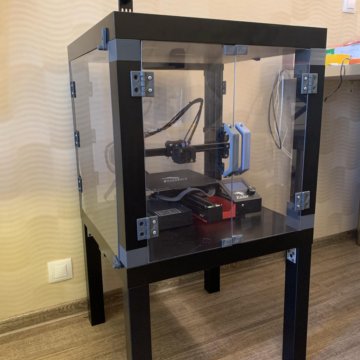 Make sure that both the hot end and the heated print bed are turned off.
Make sure that both the hot end and the heated print bed are turned off.
Hot End Temperature Monitoring
Always make sure your 3D printer monitors nozzle temperature and shuts off power to the hot end when safe limits are exceeded. Prusa printers in particular are characterized by this feature.
Housing
The housing not only controls the temperature, but also reduces noise and improves air quality. A suitable housing can also help prevent the spread of a fire that has started. Refractory panels for lining air ducts are an excellent way to add an extra layer of refractory material to an enclosure.
You should also take a good look at your 3D printer’s electronics and check for weaknesses. The most important things to consider here are the connectors, as well as the general resilience of the individual components.
Power Supplies
Cheap power supply units can mean an increased danger. However, the market has encouraged manufacturers to upgrade their units.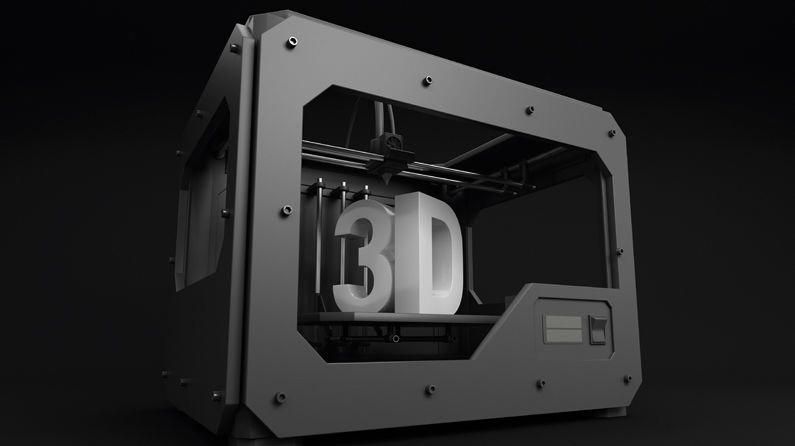 Check your power supplies for both certification and fuse, adequate wire size and connectors.
Check your power supplies for both certification and fuse, adequate wire size and connectors.
The connectors should be designed for the current drawn from hot ends and heated printing beds. If you feel that your 3D printer’s equipment is inadequate, it is advisable to consider upgrading.
Connections
3D printers offered by reputable manufacturers usually have high-quality connectors. However, you should always make sure that the connector supports and can handle the resistance that is created. Especially the heated bed should be mentioned here.
If the resistance is too high, the connections are heated up so much that overheating can occur. As a result, the plastic covers surrounding the connections may melt. In the worst case, this can lead to fire development.
Bolted Connections
What all screw connections have in common is that they have a kind of flap to protect the cabling. So it is not only the screw itself that presses on the copper strands but also an intermediate layer that prevents the individual strands from breaking off.
However, if you are using a screw connection that does not include an intermediate layer, you should either include a solid core wiring or add a crimp to the end of the wire.
Cable Connectors
Loose connections can cause resistance. This in turn causes heat, which in turn can cause a fire. Therefore, it is recommended to replace insufficient connectors. Check the amperage indicated on the connector to ensure that the correct power rating is available.
MOSFET
A MOSFET represents only a simple switch. It allows switching even large currents, which are needed for example for the operation of the heating bed, by a low current input as the control signal.
In general, every printer has MOSFETs. However, in order to avoid a possible fire hazard, an external MOSFET module next to the board is meant, which can be used to bypass the power needed for the heating bed or other large consumers via separate cables from the power supply unit to the board. In this function, a MOSFET can reduce higher fire risk in case of low-quality terminals or bad boards.
Since the expected currents in a 24 V system are much lower than, for example, in a 12 V system, this can usually be achieved without an external MOSFET. In general, a high-quality board does not require any additional MOSFETs. However, if you own a cheap printer kit from China, you should check it carefully in this respect.
Fuses
You should also carefully check the fuses to reduce the risk of fire to your 3D printer. Your power supply usually has a possible resistance of 25 or 30 amps, so that it can output a maximum of this current before it is automatically turned off for safety reasons.
So if you short-circuit the output directly at the supply, this is no problem at all. The power supply is simply cut off. If you imagine that a short circuit occurs directly at the cartridge heater, the only resistance at the output is the MOSFET and the wires.
This can often result in enough current flowing now to melt the wiring, which of course is not designed for the strength of such currents. However, there is not enough current to trigger the overcurrent protection of the power supply. So what you need are single fuses, which must be located not only at the input but also at each separate output.
However, there is not enough current to trigger the overcurrent protection of the power supply. So what you need are single fuses, which must be located not only at the input but also at each separate output.
Again, the power supply itself already has built-in self-protection, but this is not sensitive enough to protect every single power with lower power consumption.
A rule of thumb is that a good and reliable safety level should be at least 20 percent above the expected current. This means that for a 12 V 30 W cartridge heater, which normally consumes about 2.5 A, you should use a 3 A fuse.
For a 12 V heating bed, which normally consumes about 12 A, a 15 A fuse is the optimal choice. You can look around for car fuses, for example. You can also find suitable holders for them in specialist shops and they are usually available at a reasonable price. Such a purchase is definitely cheaper for you than replacing a completely burned out printer.
Excessive Cable Elongation
Heating cables without appropriate tensile load represent a further source of danger.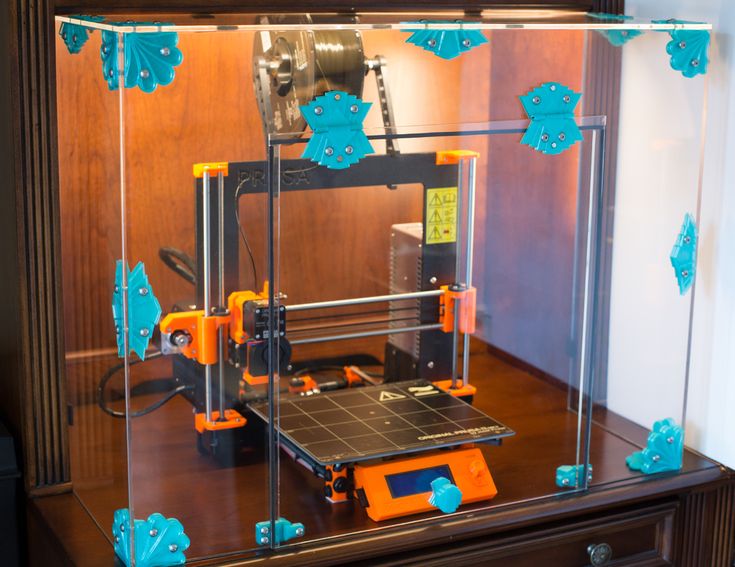 Basically, this is a ticking time bomb, as the individual cable strands become weaker over time and eventually break.
Basically, this is a ticking time bomb, as the individual cable strands become weaker over time and eventually break.
This can also often be observed in charging cables for smartphones. At the point where the cable strands begin to break, they reduce the strength of the cable to the few remaining strands, but the intensity of the current is still the same so that this point heats up continuously faster.
This can result in an electrically triggered fire. Cheap 3D printers, in particular, with inadequate quality often show this problem.
To avoid excessive cable stretching and the resulting risks, you should first create a strain relief. Make sure that the cables are spread over a longer length and that there are no sharp bends at individual points.
A good and effective solution can be to put a flexible wire around all cables. This bundles the existing cabling in an attractive and at the same time stable way and thus creates the stability you want. However, make sure that both ends are attached in such a way that they cannot bend.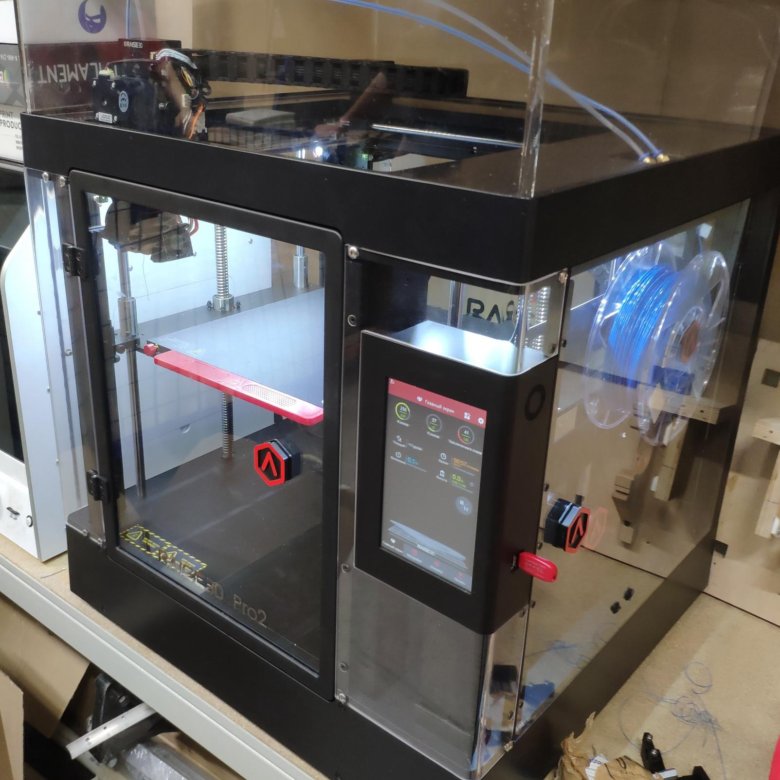 Flexible cables are available in all possible sizes, but you should try to use the smallest size, as the larger models often become very bulky and stiff at the same time.
Flexible cables are available in all possible sizes, but you should try to use the smallest size, as the larger models often become very bulky and stiff at the same time.
Another option is a spiral winding. The cables are now well bundled, but it still does not completely prevent them from kinking. A semi-flexible filament such as nylon can prevent them from kinking at the same place over and over again and then tangling with the rest of the cables.
Proper Functioning of the Firmware
There are two factors that will ensure that your 3D printer can work properly: The first is the hardware, which should be optimally prepared for each step of the printing process. The next point is the firmware included in the printer. This is usually activated in time before serious malfunctions can occur. So you should also examine this carefully.
A modern, well-configured firmware will thoroughly check the 3D printer and make sure everything is correct. It will calculate appropriate temperatures in the hot end and the heated print bed and take into account the time it takes to reach these temperatures.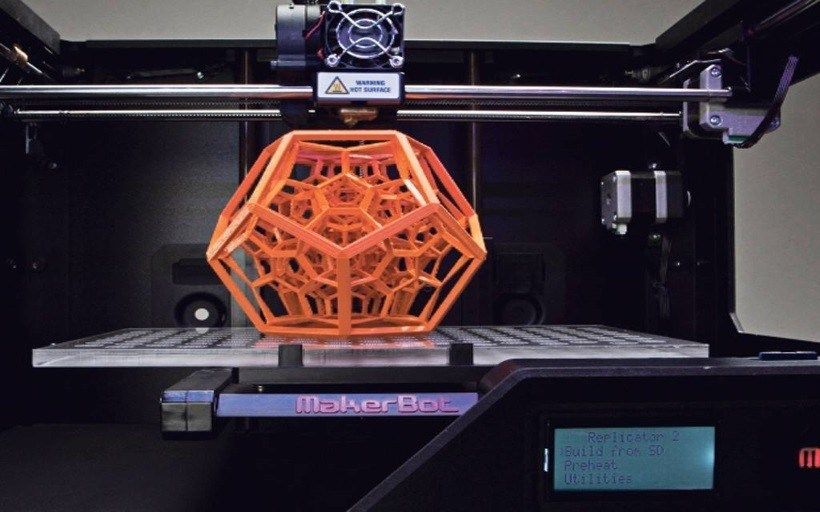 The firmware also allows you to check all values once the previously calculated temperature has been reached. If the temperature of the hot end is close to the previously determined maximum temperature, the firmware ensures that the printer is switched off before this temperature can be exceeded and, in the worst case, the heating element falls out.
The firmware also allows you to check all values once the previously calculated temperature has been reached. If the temperature of the hot end is close to the previously determined maximum temperature, the firmware ensures that the printer is switched off before this temperature can be exceeded and, in the worst case, the heating element falls out.
These verification features are enabled by default in newer versions of Marlin firmware. However, some manufacturers deactivate them, as these protective measures can be triggered for no reason in individual cases and a print can be stopped erroneously. In general, however, it is recommended that you enable them and update the firmware again. Normally you will benefit from a wider range of functions, better performance and increased reliability of your device.
Other Preventive Fire Measures
Checking your equipment is only the first step. Other aspects you should consider are:
Keep your device clean
Fans and stepper motors in amateur 3D printers are typically small enough to tolerate slight blocking without overheating.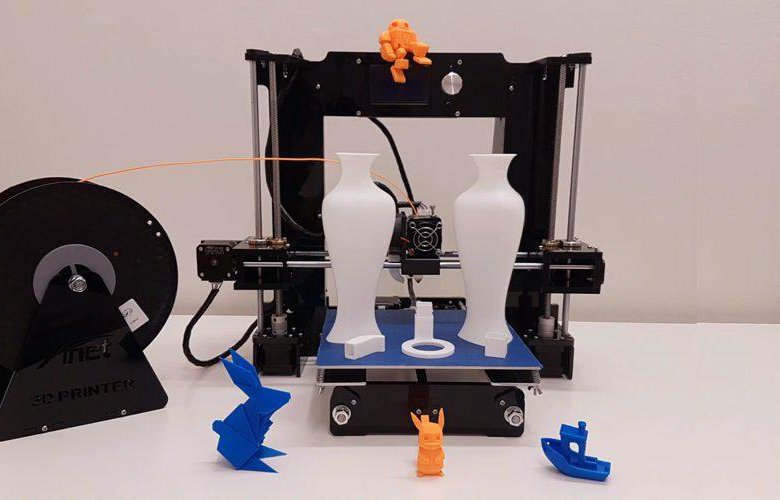 However, it is still a good idea to carefully remove the small pieces of lint or plastic from time to time. Also, check the bottom of the heating bed. Small accumulations of dust are also excellent sources of fire.
However, it is still a good idea to carefully remove the small pieces of lint or plastic from time to time. Also, check the bottom of the heating bed. Small accumulations of dust are also excellent sources of fire.
Ensure a tidy work area
As already mentioned, the environment of your printer should always be tidy. A room where a 3D printer is located is not the right place to stack books or various papers. Keep the work area clear so that nothing in the immediate vicinity can heat up.
For remote printing in particular, the ideal place for a 3D printer is a fireproof room, but most users will not have that. So it’s even more important to remove the hazards you can control. The printer should not necessarily be placed on a wooden shelf or cabinet, but on a metal shelf instead.
The execution of remote printing and its monitoring
With printing processes that take many hours or even days to complete, you may not be able to stay at home all the time or keep an eye on your 3D printer.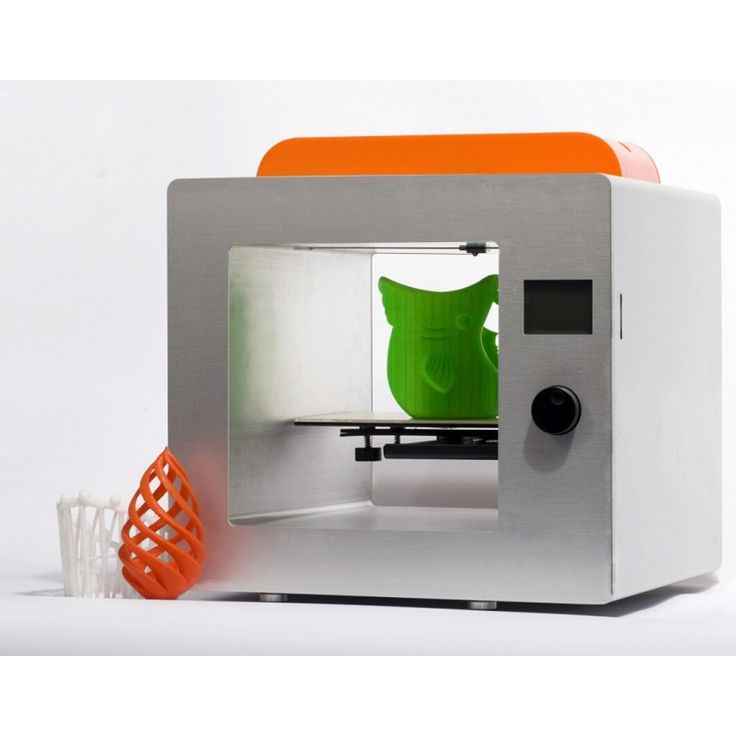 But there are different ways to maintain some control and ensure that you can intervene if necessary.
But there are different ways to maintain some control and ensure that you can intervene if necessary.
With the cloud-enabled cameras now available on the market, as well as a variety of security alarms and switches, remote monitoring and control over long distances are both straightforward and affordable. Remember, all of these devices also pass through the cloud application and storage of the respective provider. To prevent unauthorized access to your cameras or switches, it is imperative that you use a random login and a complex password.
Cameras
Virtually any surveillance camera with WiFi connectivity can be connected to a smartphone for remote viewing. Get a device with near-focus capabilities and real-time Internet access. For example, Reolink offers a range of different cameras at an affordable price. These allow you to monitor your printing process free of charge. In general, you should always look for free remote access, since many providers’ devices only require a paid subscription.
Cameras for surveillance connect via a WLAN router. It is best to set up this router in another room. Here you have the possibility of a two-channel setup. This allows you to point one camera at the print bed while the other is focused on the printer control screen. This gives you control over both the printer status and the printing status itself. This can also be useful if you are not out of the house, but are in an adjacent room.
Alarm
A fire alarm* is another mandatory measure for remotely monitoring your 3D printing. Of course, you may not be able to keep a constant eye on the cameras. A WLAN-enabled alarm, on the other hand, calls a pre-defined number when it is triggered by a fire.
Plug
As you already know, the fastest way to solve a printer problem is to simply turn it off. One way you can do this remotely is to use a smart connector*.
These can be controlled with Alexa, Google Assistant or IFTTT, for example, and can be used from anywhere via a simple application on the smartphone.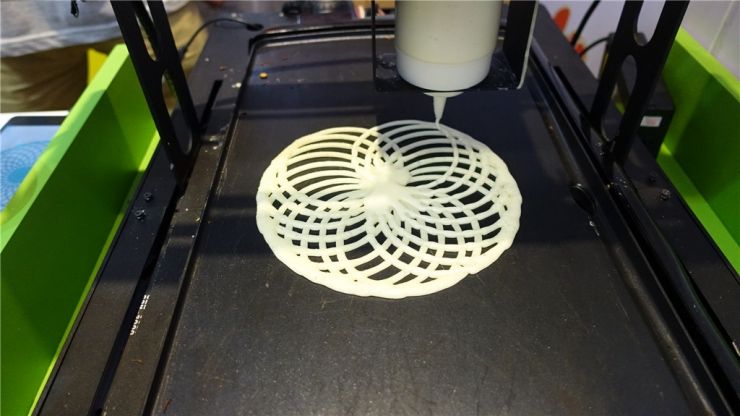 Combined with some remote cameras, this allows you to have both your eyes and your virtual hands on your 3D printer at all times.
Combined with some remote cameras, this allows you to have both your eyes and your virtual hands on your 3D printer at all times.
OctoPrint – The Ultimate Solution for Remote Control of your 3D Printer
OctoPrint is an open-source application that provides you with an embedded webcam feed that keeps track of both the hot end and the print bed temperatures. In addition, you can remotely control the position of the print head and start, stop or pause a print job.
However, to use this advanced software, you need to add a so-called Raspberry Pi* to your 3D printer as an intermediate control. While this is not as easy as connecting a camera, it’s a great way to add control to your remote printing.
Careful preparation, comprehensive remote monitoring and WiFi control are all essential to prevent a potential fire from entering the 3D printer. However, there is no complete guarantee that the printer will not catch fire due to unfortunate circumstances.
If you can’t constantly monitor your printer remotely and turn off the power when necessary, you’ll wonder what other options you have to avoid taking a greater risk in 3D printing.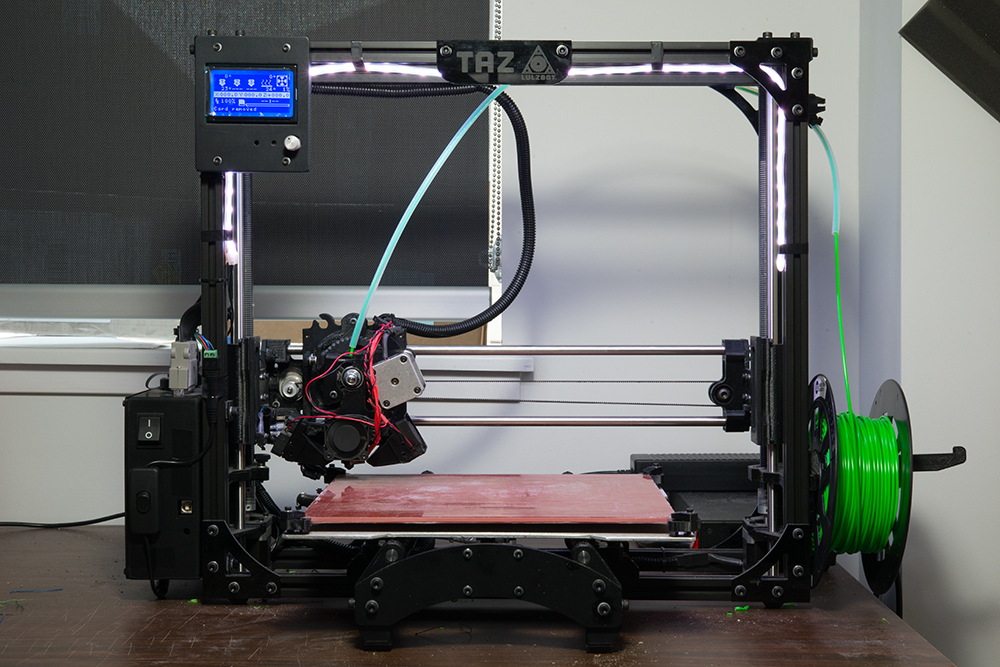 In this case, the key is carefully considered automation. Professional 3D printing facilities use halon systems, which immediately cover the affected area with fire extinguishing gas. However, there are also various solutions for hobby printers:
In this case, the key is carefully considered automation. Professional 3D printing facilities use halon systems, which immediately cover the affected area with fire extinguishing gas. However, there are also various solutions for hobby printers:
- First of all, the mentioned fire alarm is the simplest and most basic measure against possible damage caused by fire. This is an absolute must unless you have a professional security service that continuously monitors your house.
- The next step is a camera to protect against possible false alarms.
- An automatic fire extinguisher is another effective option. Usually the AFO (Automatic Fire Off) balls contained in the fire extinguisher are automatically activated within five to ten seconds after contact with a flame. You can attach them to a cabinet or simply place them on the frame of your 3D printer. When activated, they leave quite a mess, but they can prevent even greater damage.
Related Questions
Is there an alternative to the MOSFETS?
Instead of a MOSFET, an SSR* can be used as an alternative to reduce the load on the printer board.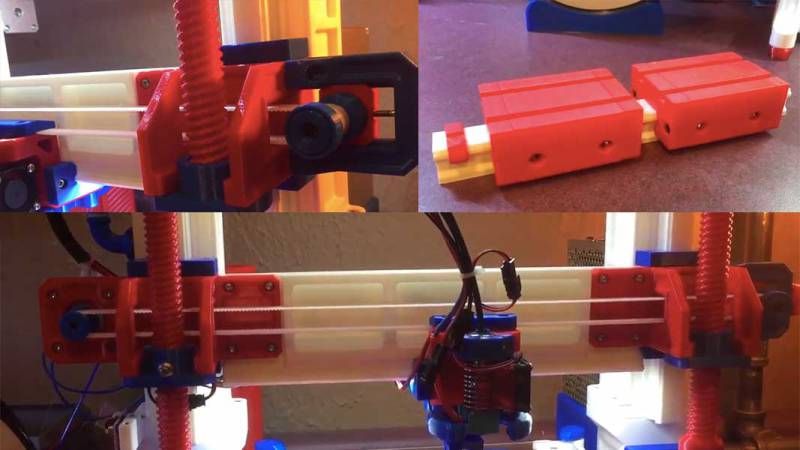 SSR stands for Solid State Relays and represents electronic switches that are able to control other components by processing the control signals of a transmitter. When an SSR is integrated into a 3D printer, it processes the control signals from the control board to control the heating bed.
SSR stands for Solid State Relays and represents electronic switches that are able to control other components by processing the control signals of a transmitter. When an SSR is integrated into a 3D printer, it processes the control signals from the control board to control the heating bed.
An SSR offers the advantage that the heating current does not flow as usual from the power supply via the control board to the heating bed, but can run exclusively via the SSR. The connections on the board are spared as the control board only has to control the SSR with a low load.
However, the SSR also has the disadvantage that it has a relatively high electrical resistance, which is higher than in a normal cable. As a result, the SSR can become very hot under certain circumstances. An additional mounting of a heat sink, which can affect the SSR, is therefore advisable.
What components are required to install an SSR?
An SSR for the heating bed is installed to relieve the load on the current-carrying components of the printer board. For this purpose, the components are first positioned as they are required in the final setup.
For this purpose, the components are first positioned as they are required in the final setup.
These ideally include a highly flexible silicone cable, wire end sleeves or cable lugs, which are attached to the ends of the stripped cables for safety reasons, a crimping tool and the solid state relay. Furthermore, it is recommended to mount a heat sink for the SSR. The cables can optionally be additionally insulated with insulating tape or shrink tubing.
What else is needed so that an SSR already installed can contribute to fire protection?
Installing an SSR also helps to protect the 3D printer from fire, as both the printer board and power connections do not become as hot as they used to. However, an additional safety measure should be taken: The use of Marlin firmware is a further step, in addition to the SSR, to increase the safety of the 3D printing process.
This firmware includes Thermal Runaway Protection, which further protects the 3D printer by ensuring that if a certain temperature is exceeded, the power to both the nozzle and the heating bed is cut off and the printer is disabled. To ensure that this feature is enabled within the Marlin firmware, it is recommended that you update the firmware when you start up the printer.
To ensure that this feature is enabled within the Marlin firmware, it is recommended that you update the firmware when you start up the printer.
Disclosure: This website is the property of Martin Lütkemeyer and is operated by Martin Lütkemeyer. Martin Lütkemeyer is a member of the Amazon Services LLC and other Affiliate Programs. These are affiliate advertising programs designed to enable websites to earn advertising revenue through advertising and linking to Amazon.com and others. Links marked with * are affiliate links.
3 main dangers of a 3d printer that you didn’t even think about
Most people who use household appliances don’t even think that their use can cause real harm to health, not to mention the use of production equipment at home, which includes even the most simple 3D printer
Danger #1 - VOCs
VOCs are volatile organic compounds. This is a group of chemical compounds that, when evaporated, can cause significant harm to health and the environment. These VOCs are plentiful in print filaments. In the process of printing, the hot end of the printer heats up the plastic and VOCs begin to evaporate from it, extremely actively, then evaporation continues on the hot table until the product has completely cooled down. Many sources say that printing with PLA filament is absolutely safe - it is an environmentally friendly material made from corn. In fact, PLA plastic is even more toxic than, for example, ABS when heated to the same temperature, but PLA plastic is printed at a lower temperature and therefore less VOCs are released.
These VOCs are plentiful in print filaments. In the process of printing, the hot end of the printer heats up the plastic and VOCs begin to evaporate from it, extremely actively, then evaporation continues on the hot table until the product has completely cooled down. Many sources say that printing with PLA filament is absolutely safe - it is an environmentally friendly material made from corn. In fact, PLA plastic is even more toxic than, for example, ABS when heated to the same temperature, but PLA plastic is printed at a lower temperature and therefore less VOCs are released.
Hazard #2 - Microplastics
It turns out that the printing process releases not only volatile organic compounds into the air, but particulate matter that can damage the human respiratory system. These hard particles are called in another way "microplastics". They are essentially particles of plastic 100 nanometers or smaller. They fly freely in the air, are inhaled by humans and settle inside us. This problem has not been thoroughly studied yet, since it appeared in the last 10-15 years, but the negative impact of microplastics on all systems and organs of living beings has been proven.
This problem has not been thoroughly studied yet, since it appeared in the last 10-15 years, but the negative impact of microplastics on all systems and organs of living beings has been proven.
Hazard #3 - Fire
A 3D printer is such a specific device that includes heat, moving parts, flammable plastics, and long, continuous operation. Almost everyone who has ever printed massive parts with print times over 12 hours has left their printers unattended for hours or even overnight. To date, there have been cases of fire in 3D printers during operation. The main problem is overheating of the structural elements and the microprocessor.
One answer to all questions
Experts who deal with this problem recommend equipping 3D printers, especially if they are used at home, with cases with an air cleaning system, visual control and remote power off.
3d printer housing It is easiest to make a simple housing from a structural profile, you must remember that such a housing must be airtight, since microplastics and VOCs can penetrate through the smallest cracks. The case must be equipped with exhaust ventilation and several layers of HEPA filters at the outlet, ideally a carbon filter, this will increase the level of microplastic cleaning. Taking the air duct outside is also an option, but there is a possibility of a drop in temperature inside the case, which will affect print quality.
The case must be equipped with exhaust ventilation and several layers of HEPA filters at the outlet, ideally a carbon filter, this will increase the level of microplastic cleaning. Taking the air duct outside is also an option, but there is a possibility of a drop in temperature inside the case, which will affect print quality.
If you still don’t change your mind about leaving printers unattended, equip the case with a simple webcam with remote access via the Internet, this will allow you to periodically monitor the situation and take the necessary measures if something happens.
Housing 3d printer Well, to control the work, it is necessary to equip the printer's power supply system with a remotely controlled relay or socket that can be de-energized remotely via the Internet. This not tricky gadget will not only provide security, but also save money, if the model suddenly fell off and printing continues, then the printer can be turned off from the smartphone.
And of course it is useful to keep the printer clean, regularly clean the motherboard and motor drivers from soap and microplastics
The seal has come offWhat can cause a 3D printer to catch fire?
safety thermal-runaway
From what I've seen, it's possible to take a typical extruder heater, apply the assigned supply voltage without temperature control. And as long as the heater does not come into contact with something below the ignition temperature that the heater reaches, the heater will not ignite. Thus, unless someone catches a fired filament, it appears that the thermal runaway of the extruder heater will not normally start a fire.
I'm not sure what happens if someone installs the wrong components such as a 12V heater to a 24V power supply. In what situations can 3D printing catch fire?
@Perry Webb, 👍0
Talk
3 replies
▲ 2
A normal hot end won't melt first and won't usually cause fires in the video. However, if the power control unit also fails and a higher voltage is applied (19on a 12V cartridge), this can happen, see the second video.
However, if the power control unit also fails and a higher voltage is applied (19on a 12V cartridge), this can happen, see the second video.
Fires are most often caused by overheating of wires, especially where joints are present.
Hotend runaway does not cause fires from the hotend itself, but may cause a fire associated with its wiring. In addition, uncontrolled temperatures can cause the hot end fan to fail, worsening the situation.
Problems can also be caused by discoloration on the table and overheated MOSFETs.
, @ FarO
▲ 3
In short:
- No thermal runaway installed on control board
- Hot bed connectors are loose and begin to heat up until wires ignite
- Power supply or its connectors begin to heat up until they light up
- The modifications you made to your printer were not well thought out, resulting in a capacitor explosion (raises hand; this happened to me too).
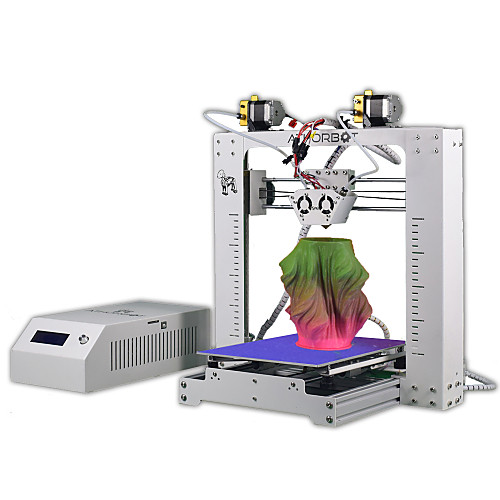
, @ user77232
▲ 2
Another fire source comes from the connections, not the heaters themselves.
As the joint and connector age, the electrical resistance of the joint increases. Up to a certain point, this is not a problem. Part of the energy goes to heat the joint, and less energy goes to the heated element. They are in closed circuits, so energy is applied longer to compensate.
The connection uses the lost energy for its own heating. This increases the rate of corrosion, and can also cause the plastic to flow in the connector, which weakens the connection pressure, further increasing corrosion, resistance, and heat.
This situation is unstable and ends in one of three ways:
- The extrusion hot end or bed becomes less hot, which affects print quality.
- the connection opens and the heated system simply fails,
- or in the worst case, when the temperature rises to such an extent that the connector housing, wire, heating circuit board, or dust and fur on the connector catch fire.

Learn more




